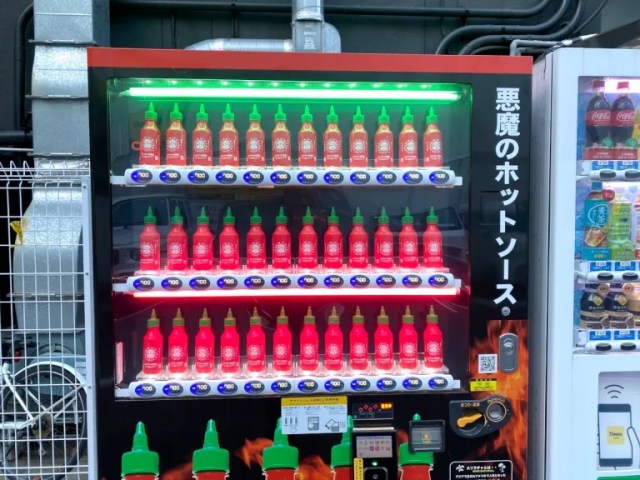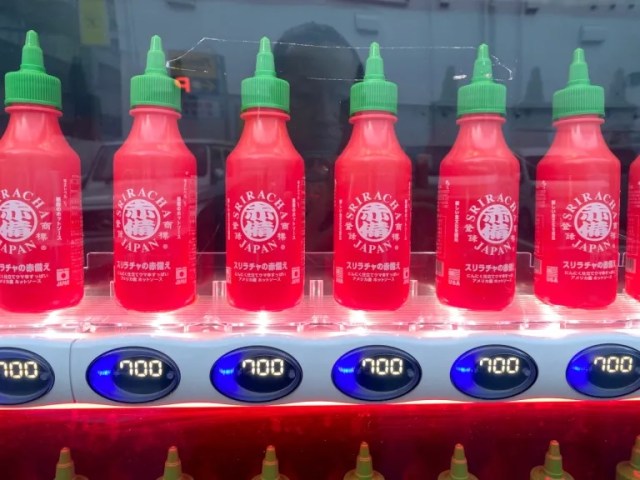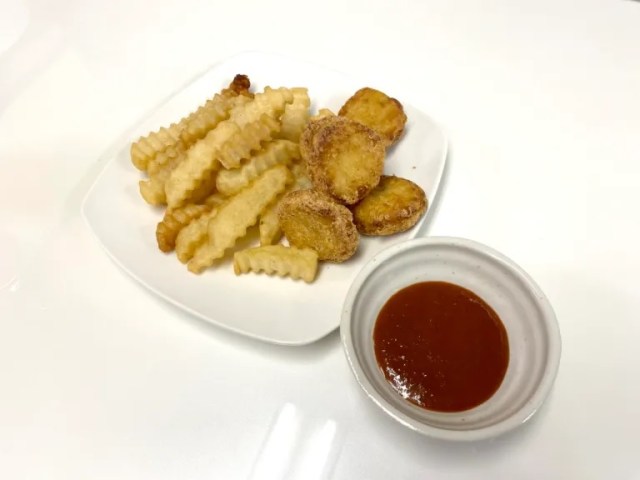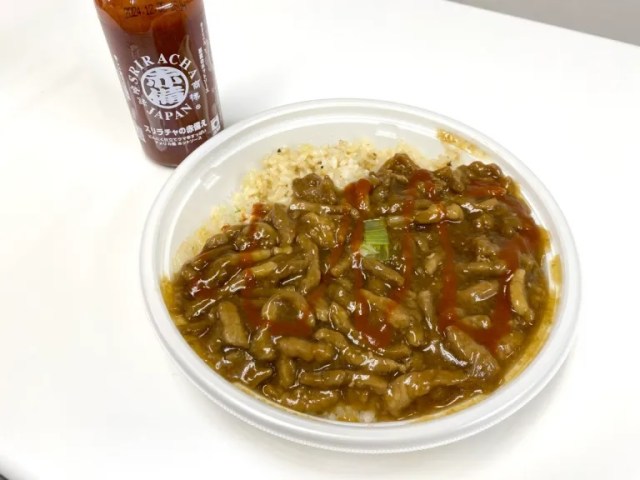Sriracha vending machines rising in Japan, our reporter tries it for first time (with Cup Noodle)

The hit hot sauce from overseas isn’t quite what he was expecting.
In our recent taste test of McDonald’s Japan’s shrimp nuggets, you might have noticed that one of the sauces we dipped them in was Sriracha. McDonald’s Japan doesn’t give out packets of the brand of spicy sauce made by Southern California’s Huy Fong Foods, however, and it’s still pretty hard to find in Japanese supermarkets too.
There has been an increase in Japan’s number of Sriracha vending machines, though. First appearing in the summer of 2021, they’ve since become quite a bit more numerous in the Tokyo, Nagoya, Osaka, and Fukuoka areas, as well as in Okinawa, as the map below shows.
Still, compared to normal drink vending machines, Sriracha ones are pretty uncommon. When you do pass by one, though, they’re very visible, due in no small part to their strips of neon green and red lights.

Having walked past a few of the machines, our Japanese-language reporter P.K. Sanjun, who’d never tried Sriracha before, decided to buy a bottle.

After feeding 700 yen (US$4.70) into the machine, he retrieved his purchase from the tray.
▼ The bottle comes packaged inside a tube that says “Delicious spicy hot sauce with garlic” in Japanese

Once he got home, P.K. decided to see how Sriracha would pair with four different foods, though he tested the first two, chicken nuggets and French fries, as a set, since they’re such a popular combination.

Using the Sriracha as a dip would give him the best idea of the flavor of the sauce’s seasoning power by itself, he figured. He noticed the strong garlic and sour notes, giving way to a spciy but clean finish. However, he was surprised at how he couldn’t detect even a trace of umami flavor, leaving him to think that as a solo seasoning Sriracha will give you a mix of garlic, spice, and sourness, but not much else.
Next up, ankake chahan, or fried rice with a thick, starch-based sauce. Ankake chahan is a staple at Chinese restaurants in Japan, somewhat similar to how Sriracha-brand sauce is a U.S. product with Thai inspirations.

When mixed in with the ankake sauce, P.K. was surprised at how mellow its spiciness became, though once again with a clean finish. He’d sort of expected Sriracha to be a super-fiery flavor, but that wasn’t turning out to be the case, and if you want to feel the heat with a Sriracha-enhanced ankake chahan, he suggests that you really pour the stuff on.
And last, it was time to test Sriracha with Cup Noodle.

When it was mixed in with Cup Noodle broth, P.K. could barely taste the Sriracha at all. Instant ramen broth tends to have very strong flavors, and they were easily overpowering the Sriracha. Not that the result tasted bad, Cup Noodle itself is tasty stuff, but it didn’t taste much different from Cup Noodle without Sriracha.
In the end, P.K. isn’t dissatisfied or disappointed with Sriracha, but he hasn’t found a combination that really shows him why it’s become so popular overseas. His current theory is that it probably works best with simpler recipes, things where there isn’t a lot else going on in the seasoning department, so that the Sriracha can play the leading role. As to what specific dishes those would be, he’s not sure yet, but without about half his bottle left he’s still got enough supplies for further experimentation.
Photos © SoraNews24
● Want to hear about SoraNews24’s latest articles as soon as they’re published? Follow us on Facebook and Twitter!
Credit:

0 comments:
Post a Comment